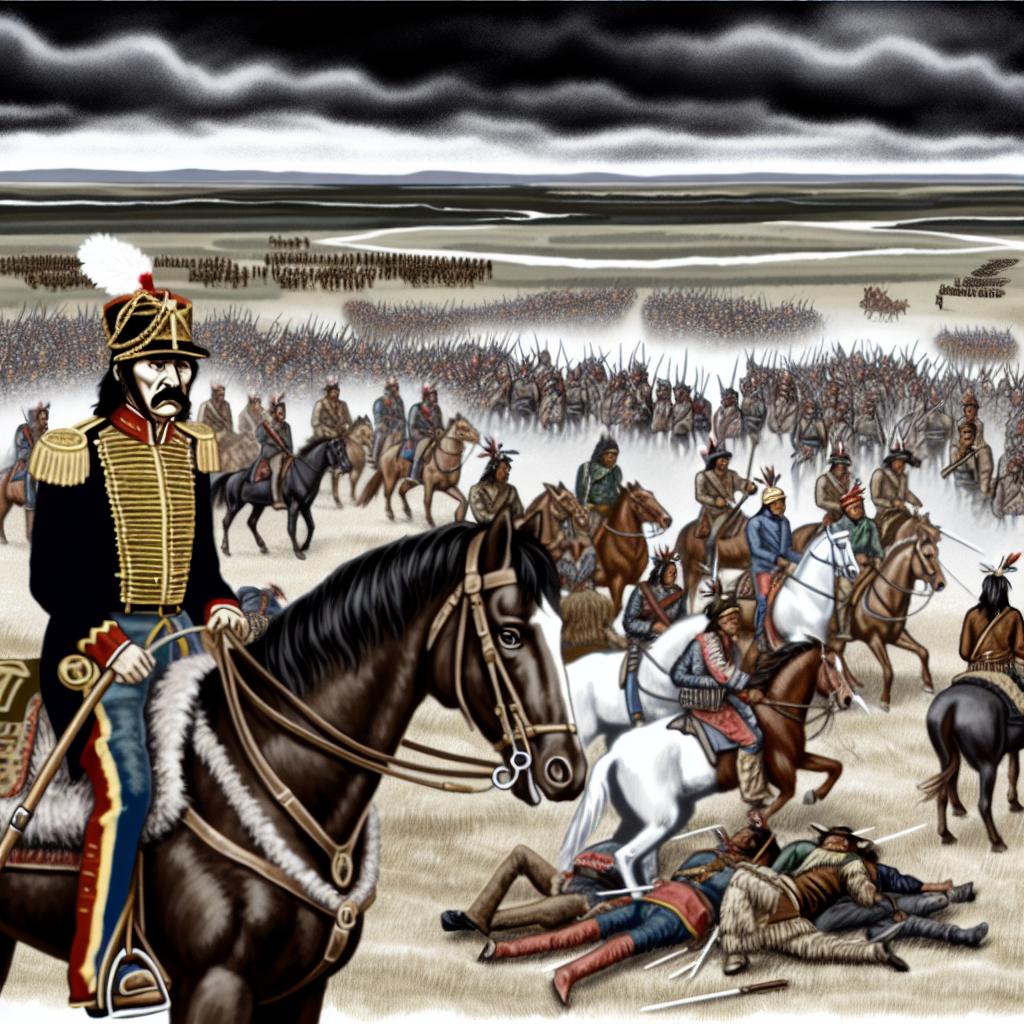The Battle of Little Bighorn
The Battle of Little Bighorn, often recognized as Custer’s Last Stand, unfolded over two critical days, June 25 and 26, in 1876. This confrontation emerged as a pivotal moment within the context of the Great Sioux War of 1876. The war itself was a broader series of conflicts pitting the United States military against various Native American tribes. Prominent among these were the Lakota Sioux, Northern Cheyenne, and Arapaho tribes. The encounter occurred near the Little Bighorn River, in an area that is now part of the state of Montana.
The seeds of this battle were sown through the persistent efforts of the U.S. government to relocate Native American tribes to designated reservations. Such efforts were primarily driven by the desire to access and exploit potentially valuable resources in areas traditionally inhabited by these tribes. The discovery of gold in the Black Hills exacerbated these policies, significantly increasing tensions. The Battle of Little Bighorn stands out in U.S. history not only for its dramatic unfolding but also for the severe defeat it inflicted on the U.S. forces.
General George Armstrong Custer
The figure most closely associated with the Battle of Little Bighorn is General George Armstrong Custer. Known for his command role in both the American Civil War and later, the Indian Wars, Custer’s legacy primarily centers around this ill-fated engagement. Born on December 5, 1839, in New Rumley, Ohio, Custer embarked on a military career that began with his graduation from the United States Military Academy at West Point. Notably, he graduated last in his class in 1861. Nevertheless, his career was marked by a distinct flair for leadership and a bold, audacious command style, traits that became synonymous with his military reputation.
Following his service in the Civil War, Custer was appointed as a lieutenant colonel in the U.S. 7th Cavalry Regiment. His approach to managing Native American resistance was notably aggressive, mirroring the broader U.S. policy of pursuing westward expansion often at considerable cost. Custer’s tactics during the Indian Wars have been the subject of much debate, praised by some for their boldness but criticized by others for their recklessness.
The Events Leading to the Battle
The events culminating in the Battle of Little Bighorn were set in motion by Custer’s expedition into the Black Hills of South Dakota in 1874. This region held profound spiritual significance for the Sioux, making the incursion particularly inflammatory. The discovery of gold during the expedition set off a rush of prospectors into the area. The U.S. government’s subsequent attempts to purchase the Black Hills were met with failure, prompting a decision to pursue the forcible relocation of Native populations. This series of events inevitably laid the groundwork for the subsequent hostilities characteristic of the Battle of Little Bighorn.
By the spring of 1876, tensions had reached a boiling point. Custer, along with the 7th Cavalry, became part of a larger initiative designed to neutralize the resistant tribes. Ambitious and seeking personal glory, Custer advanced independently of planned reinforcements. This decision led to his encounter with a formidable assembly of Native American forces guided by influential leaders such as Sitting Bull, Crazy Horse, and Chief Gall.
The Battle and Its Aftermath
The battle began under the assumption by Custer’s forces that they were engaging a comparatively small encampment. However, they were confronted by a significantly larger and well-prepared Native American force. Custer’s tactical decision to divide his troops into smaller, more manageable contingents would prove catastrophic. This division left his forces unable to effectively coordinate and support one another, ultimately leading to their defeat.
The repercussions of the battle were profound. Custer and more than 260 of his men were killed, marking a decisive victory for the Native American coalition. The aftermath of this defeat was striking, leaving the U.S. public in shock. Custer, in death, became a symbol of varying interpretations—celebrated by some as heroic and criticized by others as reckless. The U.S. government’s response was swift, intensifying military campaigns that eventually led to the subjugation of the Plains tribes.
Legacy and Historical Significance
The historical legacy of the Battle of Little Bighorn continues to spark interest and analysis. It represents a poignant symbol of Native American resistance in the face of encroaching U.S. expansionist policies. While General Custer himself is often subject to critique for his strategic oversights, the battle as a whole underscores the broader struggles and injustices endured by Native American tribes during that era.
For those seeking to delve deeper into the intricacies of this historical event, numerous resources offer more detailed explorations of the battle’s causes, effects, and enduring legacy. These resources provide valuable insights, contributing to a more nuanced understanding of the complex dynamics at play during this critical period in American history.

